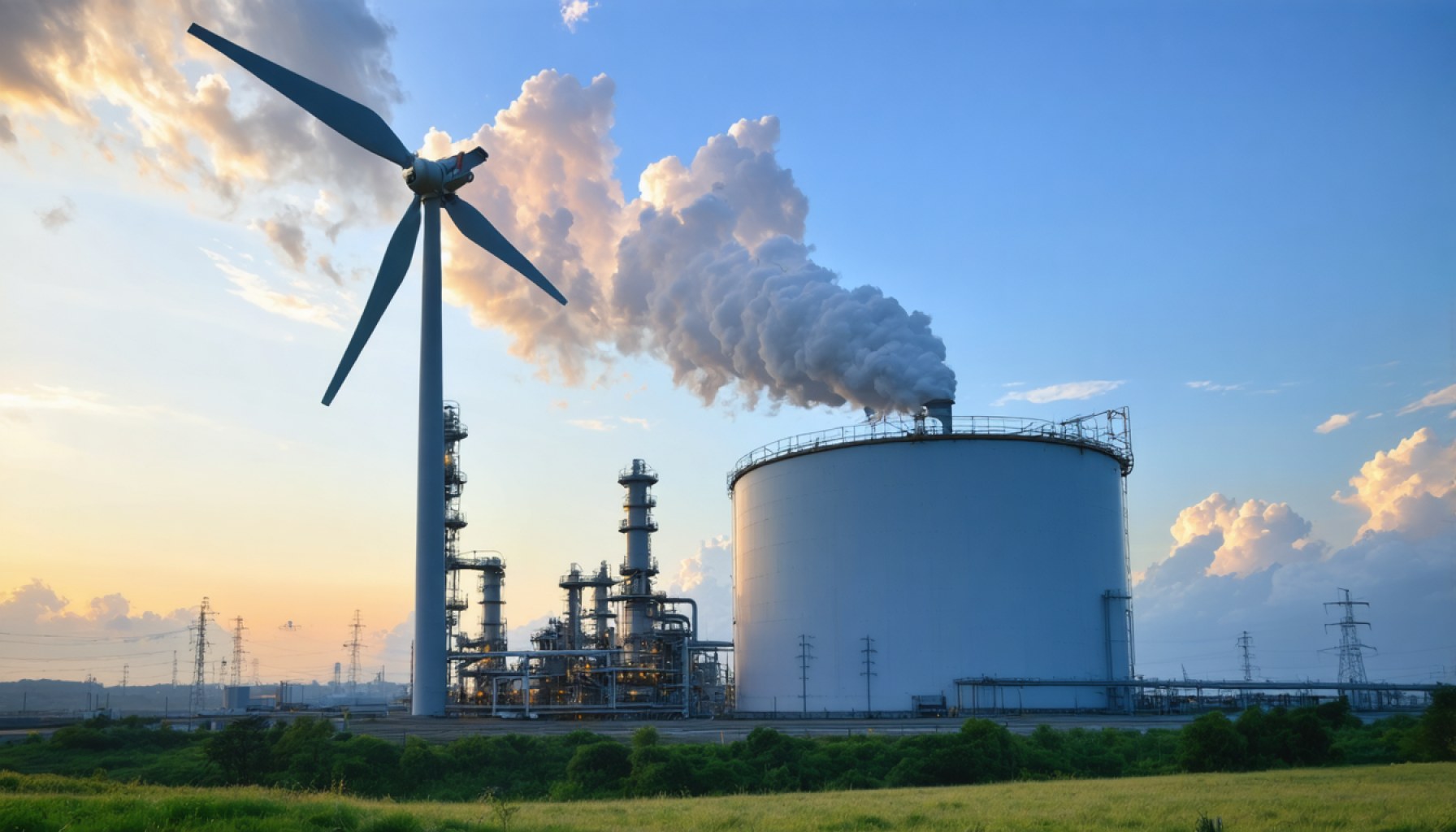- Japan is leading a groundbreaking initiative in clean energy, focusing on hydrogen production using high-temperature gas-cooled reactors.
- The Japan Atomic Energy Agency (JAEA) is developing a process called thermochemical water splitting to generate hydrogen without carbon emissions.
- This process uses the reactor’s heat, reaching up to 950°C, to dissociate water molecules, extracting hydrogen.
- The project awaits approval from Japan’s Nuclear Regulation Authority, aiming to revolutionize industries like steelmaking and chemicals by reducing carbon footprints.
- If successful, Japan’s initiative could set a global standard and help achieve carbon neutrality targets.
- The endeavor represents a significant advancement in using nuclear reactors for sustainable energy production, encouraging worldwide adoption.
- Japan’s commitment illustrates how innovation can drive environmental progress and inspire global climate action.
Amidst the persistent hum of innovation, Japan stands at the forefront, ready to redefine the landscape of clean energy. The Japan Atomic Energy Agency (JAEA) is spearheading an ambitious venture that may well transform industries across the globe. By harnessing the immense heat of a high-temperature gas-cooled reactor at the Oarai Nuclear Engineering Institute in Ibaraki, northeast of Tokyo, JAEA aims to produce clean hydrogen—a prospect promising to slash carbon output dramatically.
The strategy is as audacious as it is intricate. JAEA intends to tap into the reactor’s fiery heart, which can heat up to a staggering 950°C. This is not merely about generating electricity; the real genius lies in a process known as thermochemical water splitting. By applying this heat to water, the molecules dissociate, liberating precious hydrogen gas from its oxygen counterpart without any carbon emissions—a triumph of chemical wizardry.
If given the green light by Japan’s Nuclear Regulation Authority, this endeavor could become a game-changer for sectors traditionally chained to carbon-heavy processes, such as steelmaking and the chemical industry. The implications are colossal. Not only would it mark the world’s first use of high-temperature gas reactors for hydrogen production on such a scale, but it could also set a precedent for countries worldwide striving to meet ambitious carbon neutrality targets.
Beyond the technical marvel, the evocative image of a reactor as a wellspring of clean energy stirs the imagination. Picture a power source that not only fuels our homes and cities but also does its part in healing the planet. The potential ripple effect across economies and ecosystems is vast—a nod to a future where innovation eclipses environmental compromise.
In this bold fusion of science and sustainability, Japan offers a clarion call to the world: it is time to get serious about the cracks in our climate story. The initiative promises to energize the world’s journey to net-zero, underscoring a pivotal truth—solutions exist, ripe for those with the vision and valor to seize them.
How Japan’s Revolutionary Hydrogen Production Could Change the Global Energy Landscape
Overview
Japan’s foray into producing clean hydrogen using high-temperature gas-cooled reactors (HTGRs) represents a groundbreaking advancement in sustainable energy. This initiative by the Japan Atomic Energy Agency (JAEA) has the potential to transform various sectors while significantly reducing carbon emissions on a global scale. Here’s a deeper dive into the implications, process, and future of this innovative technology.
The Science Behind Thermochemical Water Splitting
– Process: Thermochemical water splitting involves using the extreme heat from HTGRs—up to 950°C—to break down water (H₂O) into hydrogen (H₂) and oxygen (O₂) without emitting carbon dioxide. This heat-driven process is efficient and offers a cleaner alternative to conventional methods like steam methane reforming.
– Efficiency: By optimizing the reactor’s heat, this process bypasses the need for additional fossil fuels, making it one of the most sustainable methods for hydrogen production.
Sectoral Impacts
– Steelmaking: The steel industry is one of the most significant carbon emitters. Incorporating clean hydrogen could drastically cut emissions, propelling the industry towards greener practices.
– Chemical Industry: Transitioning to hydrogen-based processes can revolutionize chemical manufacturing, reducing reliance on coal and natural gas.
– Transportation and Energy Storage: Hydrogen is increasingly seen as a viable alternative for fueling transport and storing renewable energy, essential for a green and efficient energy transition.
Market Forecasts and Industry Trends
– Global Hydrogen Market: The demand for hydrogen is projected to grow exponentially, reaching an estimated market size of $300 billion by 2050 (source: IEA). Japan’s pioneering efforts may set benchmarks for other nations, particularly within the Asia-Pacific and European regions.
– Expansion: If successful, Japan’s model could be adopted globally, necessitating the development of HTGRs worldwide as countries strive to meet their carbon neutrality goals.
Controversies and Limitations
– Nuclear Safety: Despite its promise, the deployment of nuclear reactors raises safety concerns. Ensuring rigorous safety protocols and transparent regulatory frameworks is crucial to gaining public trust.
– Cost: Initial setup and operational costs for HTGRs and thermochemical plants can be substantial, although long-term benefits and economies of scale may offset these expenses.
Insights & Predictions
– Adoption Rate: As countries increasingly focus on reducing emissions, this hydrogen production technology may see rapid adoption, especially among nations with existing nuclear infrastructure.
– Technological Advancements: Ongoing research and innovation could further enhance the efficiency and feasibility of utilizing HTGRs for hydrogen production, driving down costs and increasing appeal.
Actionable Recommendations and Quick Tips
1. Policy Support: Encourage governments to provide incentives for clean energy research and development, fostering innovations like thermochemical water splitting.
2. Industry Collaboration: Key industries can collaborate with research institutions and governments to explore incorporating clean hydrogen into their processes.
3. Public Awareness: Educate the public about the benefits and safety of using nuclear technology for clean hydrogen production to build trust and acceptance.
4. Investment Opportunities: Stakeholders and investors should explore opportunities in green hydrogen technologies, potentially yielding significant returns as the demand for clean energy solutions grows.
For more information and updates on Japan’s clean energy initiatives, visit the official website of the Japan Atomic Energy Agency.
By tapping into cutting-edge technology for hydrogen production, Japan leads a bold charge towards a sustainable energy future—an endeavor promising transformative benefits for the environment and economy alike.
